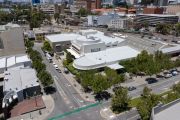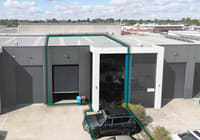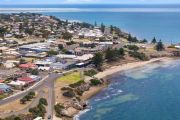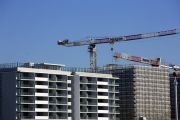
Softer inflation, cheaper land offer new home buyers a boost
Melbourne builder Shane Bennett says inflation has peaked and new home buyers may find the price of land dropping in coming months as developers try to stimulate demand.
Builders’ costs have plateaued since they stopped surging six months ago and large land developers were about to start rolling out rebates of up to $40,000 on sites in a bid to boost sales volumes, Arden Homes chief executive Mr Bennett told The Australian Financial Review on Wednesday.

Official figures on Wednesday showed that the cost of building a new home and major renovations rose 2.8 per cent in November – a 3½-year low, a result economists said was encouraging.
“Prices for building and renovating a home rose just 2.8 per cent in November from a year earlier, sharply down from the double-digit growth seen in 2022,” CommSec economist Ryan Felsman said.
But despite the more positive picture for consumers – and comments by the Australian Bureau of Statistics that builders were offering discounts and promotional offers to entice business – Mr Bennett said many could only cut prices by sacrificing profit margin.
“Some builders would have some margin they’d be able to tear up. But it’s nothing more than margin tear,” he said.
“And a lot of builders are still in pain. You’ll see a fair few will go under in the next 12-month period – they have not got room to wriggle.”
National Australia Bank senior economist Taylor Nugent said it was “difficult to overstate the importance” of softening new dwelling prices.
“While labour remains a constraint for many builders and pipelines of work remain elevated, demand has cooled, pockets of capacity in parts of the supply chain have emerged, and input-cost inflation has moderated substantially,” Mr Nugent said.
Wednesday’s monthly inflation numbers – which showed the cost growth of a new home at its weakest annual figure since July 2021 (when it was at 2.1 per cent) – coincided with separate figures showing construction industry insolvencies soaring 28 per cent year-on-year in December.
Stubbornly high financing costs have given businesses operating on razor-thin margins no relief, pushing financial year-to-date insolvency appointments in construction up to 1807 as of December 22, compared with 1410 insolvencies to the end of December 2023, separate figures from corporate regulator ASIC revealed on Wednesday.
“Insolvency levels have increased across the economy; construction still represents a significant share,” said Master Builders Australia acting chief executive Shaun Schmitke.
“Builders are still feeling the pressures of decreased productivity, a shortage of labour supply and increases to the cost of doing business.”

Creditors on Thursday will hold a first meeting into developer Bensons Property Group – a company with a $1.5 billion pipeline of 1000 apartments – which late last month put itself into administration. McGrathNicol administrators declined to comment.
Even if building cost growth was stable, sustained high borrowing costs were proving a hurdle for builders and customers, said Mr Bennett, whose company – part of the NEX Building Group owned by Japan’s Asahi Kasei Homes – builds about 250 homes a year.
Wednesday’s inflation numbers increased the chance the Reserve Bank will make a first reduction in borrowing costs next month.
This could boost the new home market, but further stimulus was needed beyond just one cut, said Mr Bennett, pointing to affordability and unreasonably high serviceability requirements as the main problems holding back buyers.
“Interest rates need to be reduced,” he said. “The first reduction will certainly make people sit up and take note, but the second is where confidence will come back into the market. We also need [financial regulator] APRA to pull the 3 per cent [serviceability buffer] back to a number that’s more realistic. I’d love to see it at 1 per cent – that would give people the ability to borrow money to build a home.”











